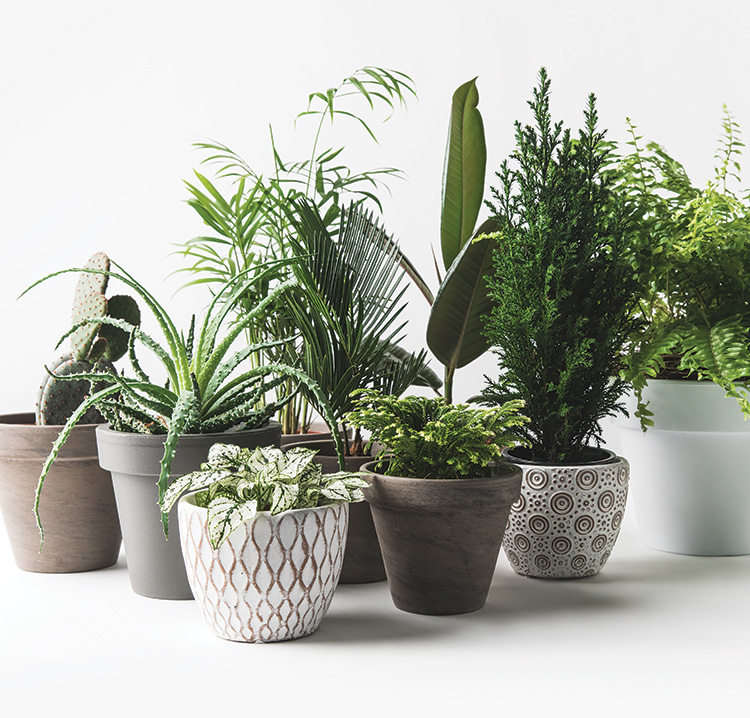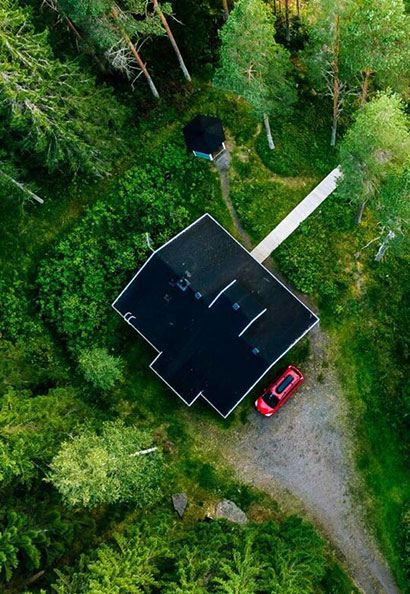
USING CONTAINER GARDENING TO YOUR ADVANTAGE
WRITTEN BY CATRIONA TUDOR ERLER
From the ancient Hanging Gardens of Babylon to the modern self-watering containers, the ability to grow plants in pots has transformed the gardening experience throughout history.
Container gardening makes it possible to grow plants in places with little or no soil, such as under trees with a dense root structure or on a deck or patio. Pots are portable, allowing you to move them out of sight when plants are past their prime or to a protected area during winter cold. Aggressive greenery, such as mint, is ideal in containers, which keep it from spreading out of control.
CREATIVE CONTAINERS
From lightweight molded fiberglass to polyurethane foam, today’s gardeners have a wealth of choice for container styles and materials. These materials can be dyed to resemble stone, clay, or metals (wrought iron, lead, bronze) and come in styles like urns, planters, and tubs. Synthetic containers are more weather resistant than ceramic or clay pots, as they can withstand exposure to both extreme cold and intense sun. An added bonus: they are up to 90 percent lighter than clay, stone, or wood pots.
Think outside the box with planting containers. Consider using unexpected items such as a giant clamshell, wheelbarrow, birdbath, or galvanized tubs. The possibilities are limited only by your imagination.
PLANTING MEDIUMS
Typically, containers contain a soilless mix. Garden soil is dense, which risks poor drainage and root spread. There are many mix recipes, but you should find success with three parts compost, and two parts each perlite, peat moss, and vermiculite. It’s cheaper to make your own, but the convenience of storebought mixtures is attractive, and most are excellent. Look for options that have time-release fertilizers and absorbent crystal polymers in the mix—your plants will be fed for weeks. The polymers retain water and release it gradually, thus reducing watering needs by 50 to 75 percent.
THOUGHTFUL DESIGN
Design your container gardens using the same principles you would follow for a traditional garden bed. For best success, combine plants with the same growing requirements and pick plants that grow with equal vigor. Ultimately, your pot will become a maintenance nightmare if you mix shade- and sun-loving plants or put thirsty plants alongside those that like to dry out between waterings. Avoid mixing rampant growers with smaller, slower-growing specimens that will be quickly overrun.
For interest, combine plants with different textured leaves and foliage colors, and vary the height to create a rhythm and flow. Start with a tall plant in the center and put low-growing plants around its base. Add flair with cascading plants or vines around the perimeter of the pot that drape over the edge and form a curtain of foliage or flowers.
Use containers as accents and focal points in your garden. On patios or extensive paved areas, containers planted with bright blooming flowers add color, excitement, and a welcome vertical element. Cluster a group of containers for a pretty composition. Attach hanging baskets to eaves, pergolas, arbors, and patio covers to visually elevate color. A pair of containers flanking a staircase offers an attractive welcome.
Containers are ideal in small gardens where in-ground growing space is limited and on balconies and decks where there would otherwise be no growing space at all.
SUSTAINABLE CARE
There are several ways to care for your plants when you are not able to do so in person. One technique is to gather all your containers together and set up a sprinkler on a timer to water the whole group. Place the sprinkler where the spray will reach each plant. Set the timer to water early in the morning or in the evening when the sun won’t burn the wet leaves. In hot, dry climates, you may need to water twice a day.
Another option is to arrange your container collection so you can run a drip line into each pot. Set up a timer, allowing enough time for the slow drip distribution of the water to saturate the potting soil. Self-watering containers provide an additional alternative. A quick online search will showcase a myriad of styles and water distribution designs.
Have fun and experiment with plant, color, and container combinations for a low-risk, high-reward garden hobby.

226.256.7999
amberjenings(at)peakpointrealestate(dotted)ca
peakpointre.realtor



